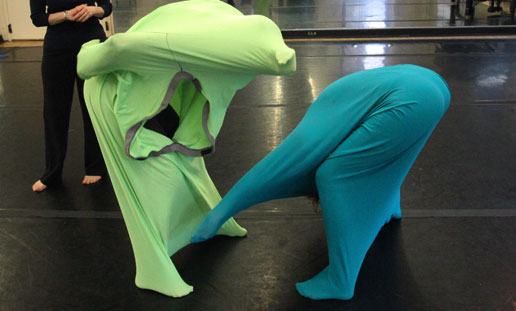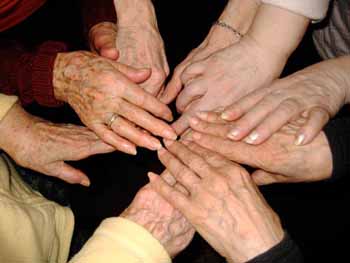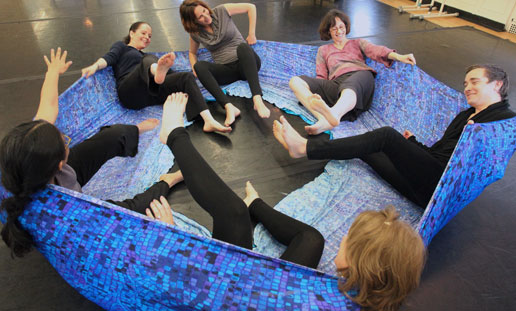A new way of doing dance/movement therapy, part II
In my blog post last week, I talked a bit about a new way of doing dance/movement therapy, in my modest opinion anyway. Although I clearly stated my viewpoint as the author of that post, I’d like to do it again. I am a second year dance/movement therapy student studying at Columbia College Chicago, and my experience within the dance/movement therapy field has been molded by that experience.
I wanted to take the opportunity to further elaborate on my previous post and give more detail about how I see dance/movement therapy.
Much of how I view dance/movement therapy (and my growing definition of the practice in general) is influenced greatly by my experience with working with adults with developmental disabilities at Anixter Center. Furthermore, it is heavily influenced by my on-site supervisor who is a registered-dance/movement therapist, as well as the art and music therapists with whom I often co-facilitate groups. In last week’s post, I talked a lot about the Chacian method and how I often feel that this method can be somewhat restricting in the therapy room, especially working with the specific clients I work with.
Since the clients I work with have developmental disabilities, they often have limited cognitive functioning (i.e. mental retardation). Such concepts as a body warm-up and theme developmental are very abstract and can be hard for my clients to understand. So when I enter the therapy room at my internship, I try very hard to meet my clients where they are, even if this means they want to jump right into dancing without a full body warm-up, one thing the Chacian method emphasizes.
If “Client L” wants to listen to disco music and start dancing right away, you best believe I am putting on disco music and dancing with her, mirroring and reflecting her movement back to her. It would be a disservice to “Client L” to say, “No, let’s sit down and do a body warm-up first.” This would be cutting off the client’s creative process and not truly being empathetic. Now of course I do need to check in with the whole group (all of my therapy sessions at my internship are group based) to make sure I am meeting ALL of the clients’ needs, and not just “Client L’s.”
What it comes down to is dance/movement therapy does not have to be this imposing structure within the therapy room. It doesn’t follow a one, two, three path. I know that all professional and emerging dance/movement therapists know this. However, I am wondering if dance/movement therapy is not solely based on the Chacian method but rather presence in general. Now I know I missed mentioning other founding dance/movement therapists, such as Blanch Evan or Alma Hawkins. But even these therapists based their work on Chace or had some type of structure.
I’m not wondering what if having no structure is a structure itself. What if creating safety and creativity within the therapy room is enough to mobilize therapeutic change (all the while keeping our counseling and observations skills at hand). What if we just sit back, wait, and see what happens. When I do this with the clients I work with, that is when the most beautiful dances come forth.



